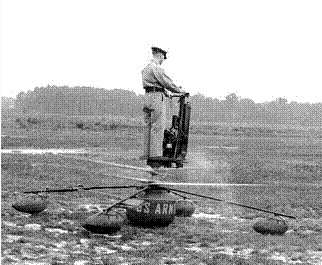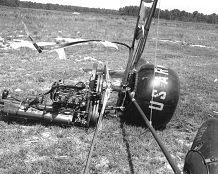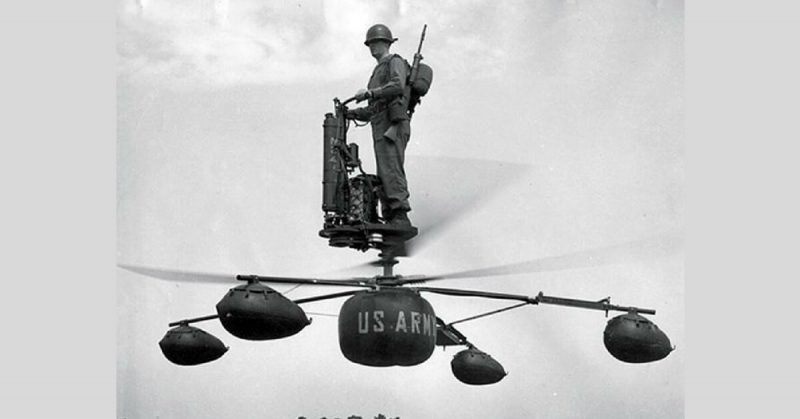Military engineers often come up with nifty but strangely odd designs for people navigation but seldom any as weird as the Aerocycle.
Whether called the Aerocyle or the Heli-vector, or the YHO-2, a name given by the military, it was one crazy little conveyance. The inventors surely imagined a sci-fi scene of individual soldiers descending from the sky onto a battlefield of a shocked and fearful enemy.
The implementation was as insane as the personal helicopter itself. It was designed for non-pilot soldiers who received only 20 minutes instruction on how it operated. The idea was to use it for reconnaissance. Untrained, inexperienced pilots were to fly them onto atomic battlefields.
The helicopter was supposed to work in a similar way to another goofy vehicle – the Segway. The pilot steered the craft using his own body weight which activated controls on the rotors mounted under it. It was supposed to be intuitive, using kinesthetic control, which engineers thought would be easy to use without much instruction or practice.
The Aerocycle was similar to a motorcycle having a twist grip throttle. The engine was a marine outboard motor while the original landing gear included affixed air bags at each end of the frame with a rubber float running down the middle. Eventually, this changed to helicopter skids.
It was anticipated it would hold a substantial amount yet still balance and perform correctly. In addition to carrying its pilot, the craft was expected to take 120 lbs as well as an extra 5-gallon fuel tank and support cargo via a lifting line attached to the rotor shaft!

There were even safety features. The pilot was secured with a safety harness which also secured the outboard motor engine. It is interesting to imagine what the safety harness would protect should the craft go out of control.
The Aerocycle was first tested in November 1954 and January 1955. The U.S. Army was pleased with the test results. They envisioned an air cavalry in the same vein as the horse cavalry, so ordered a dozen to be produced.
The next round of trials, in 1956, did not go as well. The testing had been taken over by Captain Selmer Sundby at Fort Eustis in Virginia. The rotors when just above the ground kicked up rocks and dirt. Inexperienced pilots did not seem to be able to fly it as well as was reported in the earlier tests. Sundby ultimately noted that the craft was not safe for untrained soldiers to operate.

Further testing sealed its fate. Two crashes occurred due to rotators (each turning toward each other as designed) striking together and causing the pilots to lose control. Another test at Langley Research Center found the forward speed of the craft resulted in uncontrollable pitching in windy conditions.
The Aerocycle failed to live up to the hype, so the project was scrapped. Sundby, however, was awarded the Distinguished Flying Cross for his work.
One Aerocyle survives and can be viewed at the U.S. Army Transportation Museum at Fort Eustis.
